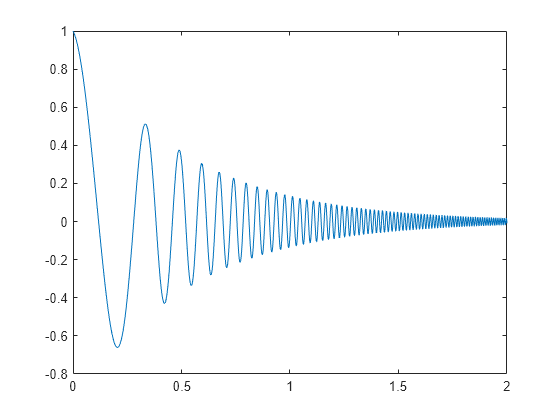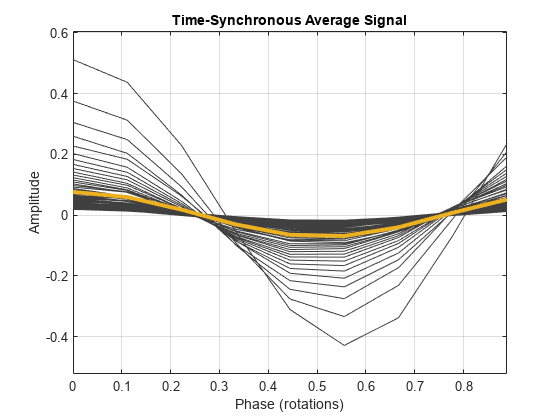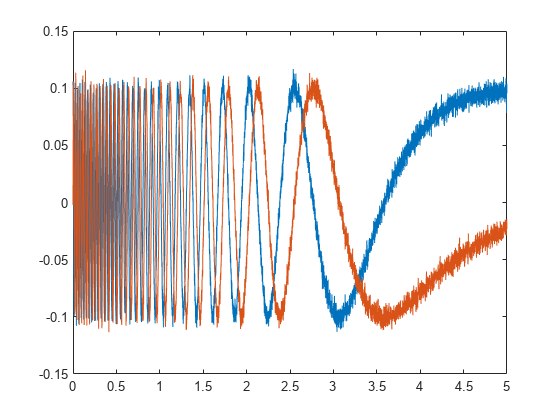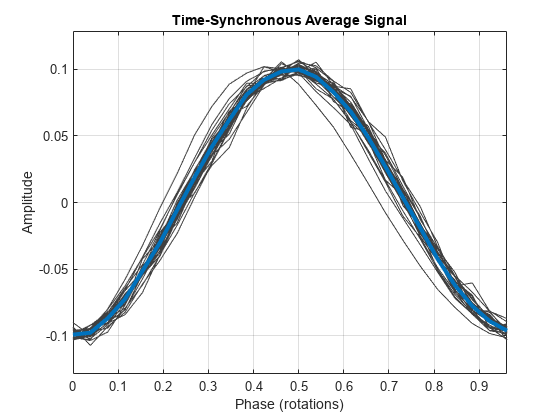tsa
Time-synchronous signal average
Syntax
Description
ta = tsa(___,Name=Value)
tsa(___) with no output arguments plots the
time-synchronous average signal and the time-domain signals corresponding to
each signal segment in the current figure.
Examples
Input Arguments
Name-Value Arguments
Output Arguments
Algorithms
Given an input signal, a sample rate, and a set of tachometer pulses,
tsa performs these steps:
Determines cycle start and end times based on the tachometer pulses and the value specified for
PulsesPerRotation.Resamples the input signal based on the value specified for
'ResampleFactor'.Averages the resampled signal based on the option specified for
'Method'.If
Methodis set to"fft", the function:Breaks the signal into segments corresponding to the different cycles.
Computes the discrete Fourier transform of each segment.
Truncates the longer transforms so all transforms have the same length.
Averages the spectra.
Computes the inverse discrete Fourier transform of the average to convert it to the time domain.
If
Methodis set to one of the time-domain methods, the function:Using the specified method, interpolates the signal onto grids of equally spaced samples corresponding to the different cycles.
Concatenates the resampled signal segments based on the value specified for
NumRotations.Computes the average of all the segments.
References
[1] Bechhoefer, Eric, and Michael Kingsley. "A Review of Time-Synchronous Average Algorithms." Proceedings of the Annual Conference of the Prognostics and Health Management Society, San Diego, CA, September-October, 2009.
Extended Capabilities
Version History
Introduced in R2017b







